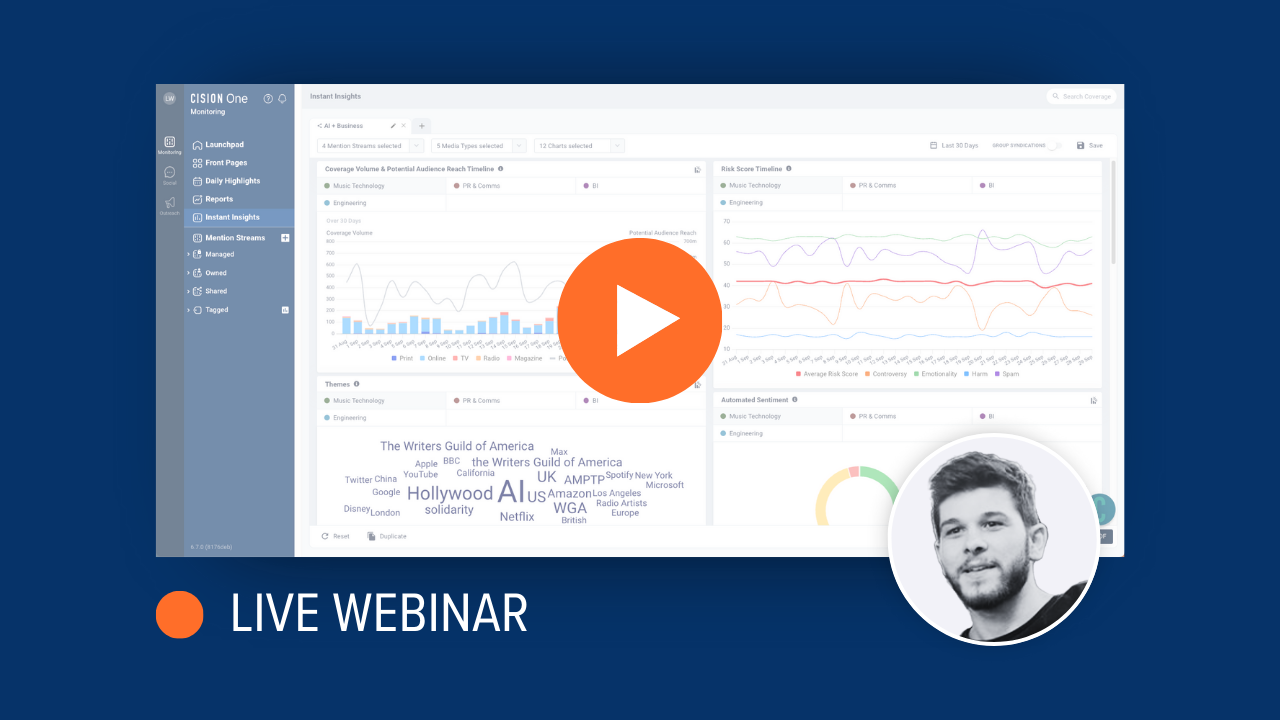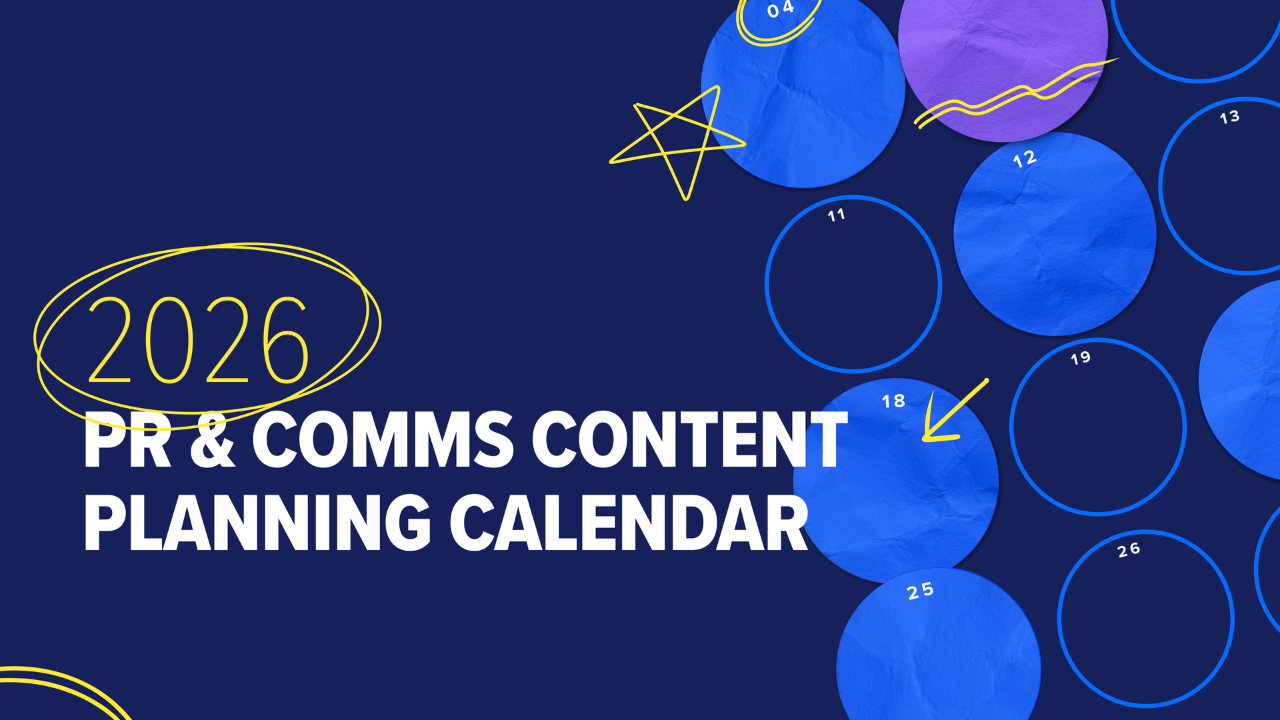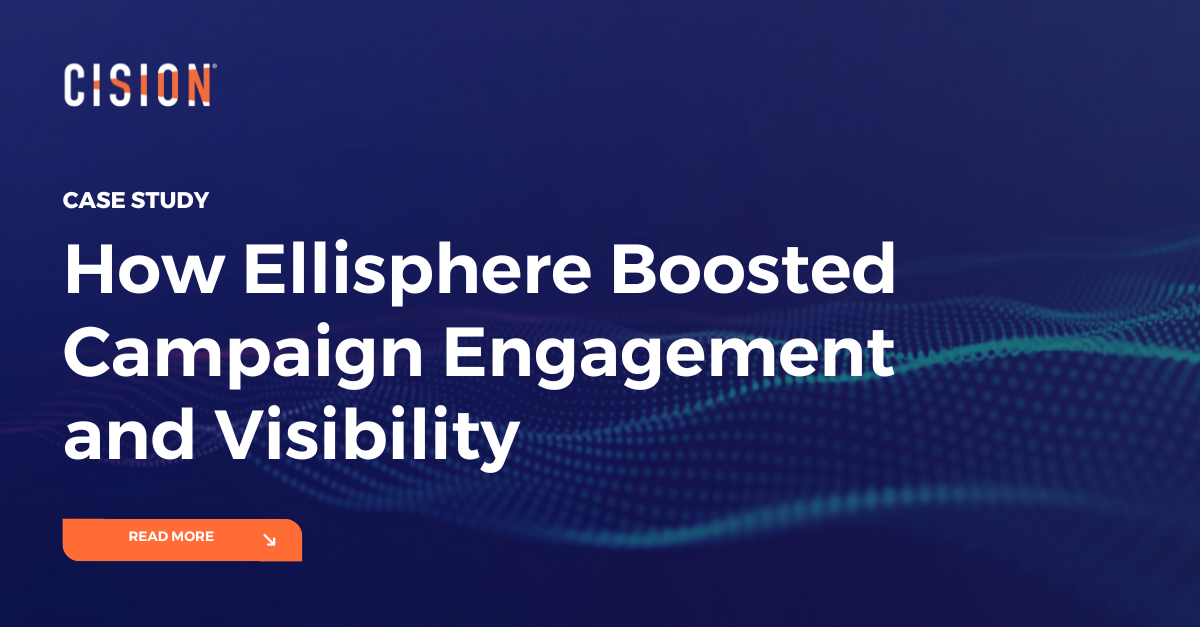Why Managing Client Expectations is Key to PR Success
In public relations, success is often measured in ways that are not always immediate or easily quantified, such as building long-term brand credibility, cultivating media relationships, or steering through a crisis.
While your team may be delivering exceptional results, clients often need more convincing, especially if they equate "PR success" with landing coverage in top-tier outlets like the Wall Street Journal. The struggle is real: In a recent Cision/PRWeek survey of more than 300 senior PR and comms leaders, 27% named proving PR’s impact to the C-suite as a top three challenge.
When there’s a lack of clarity around what PR delivers, client expectations can quickly become misaligned with the realities of PR work. Clients may expect extensive top-tier media coverage, while the PR team knows that meaningful results often take time, persistence, and strategic planning.
That’s why managing expectations from the very beginning of the PR client relationship is critical; otherwise, clients may feel shortchanged and question the value of PR, which can result in damaged trust, strained relationships, and even lost accounts. It’s a lose-lose situation. By proactively setting clear, realistic goals, PR professionals safeguard their credibility while building stronger partnerships and measurable results that align with business objectives.
Take the following steps to set your team and your clients up for a successful, long-term partnership.
Set the Foundation Early
Start with a transparent kickoff conversation to understand expectations from each side. Use the time to clarify goals, set up timelines, and discuss realistic outcomes. Be transparent on what you can achieve within a given time frame and budget. Here’s where data can be your greatest ally: Be ready to present past campaign results, media monitoring benchmarks, or industry averages to anchor expectations in reality (e.g. “On average, companies in your space see X media hits per quarter.”)
Ask the Right Questions
Asking specific questions during – or even prior to – the kickoff meeting is a critical step. The right questions can reveal what clients truly value and how they define success. They will also help identify – and give your team the chance to clarify – any misconceptions about what PR can and can’t deliver, before they become a problem. By guiding the conversation with thoughtful and thought-provoking questions, PR teams can set realistic goals with clients, build trust, and position themselves as strategic partners – rather than just order takers.
Consider the following questions to help guide your conversation and get the clarification your team needs to meet and deliver on client expectations:
- Business Objectives: What are your top three business goals for the next six to 12 months? How do you see PR supporting these goals?
- PR Goals and Priorities: What does “success in PR” look like for you? Are there specific milestones, events, or launches we should prioritize? Are there any “must-have” outcomes or non-negotiables?
- Target Audience & Messaging: Who are your most important audiences right now (customers, investors, policymakers, employees, etc.)? Are there key messages you want us to emphasize?
- Media Coverage Expectations: Which publications, journalists, or types of media coverage matter most to you? Are there any outlets you consider off-limits? What does the competitive landscape look like regarding media pick-up?
- Measurement & Reporting: Which metrics are most important for you to see (share of voice, sentiment, impressions, web traffic, leads)? How often would you like reporting (weekly dashboard, monthly recap, quarterly review)?
- Communication Preferences: How – and how often – do you want to be updated? (Weekly check-ins? Daily Slack updates? Monthly reports?) Who should be our main point of contact?
- Flexibility & Challenges: How do you prefer we handle unexpected changes (crises, negative coverage, shifting news cycles)? Are there any potential roadblocks we should anticipate? What does past experience tell you about potential obstacles?
Define Clear, Measurable Goals
Once you’ve clarified your client’s goals and how PR can contribute, you can set your own targets to align with them. A SMART goal framework (specific, measurable, achievable, relevant, time-bound) can be especially effective in this situation, because it forces both your team and your client to translate broad ambitions (such as “boost visibility” or “improve reputation”) into clear, trackable objectives.
By defining specific outcomes (for example, “secure three industry trade features in Q2”), ensuring they’re measurable (using tools like media monitoring, social listening, or web analytics), and making them achievable given the current media landscape, you can ground expectations on both sides.
The “relevant” and “time-bound” elements ensure PR activities directly support business priorities and timelines – whether that means increasing brand awareness before a product launch or driving executive visibility during a funding round. This structure not only aligns PR goals with business outcomes but also provides a transparent, straightforward way to demonstrate impact back to the C-suite.
Pro tip: Record your agreed-upon SMART goals in writing to keep everyone accountable, and refer to them during check ins or updates to show you're on track (or consider if you need to adjust) throughout the course of your engagement. Also, think about creating shared dashboards across your monitoring platforms, where both teams can track progress in real time.
Communicate Regularly and Transparently
Providing regular updates is essential for building trust and ensuring continued alignment with your client. In PR, it can take a minute to see noticeable results, but that doesn’t mean you aren’t making progress toward your goals – whether it’s new media opportunities or early campaign traction. Regular reporting gives clients confidence knowing all the work your team is doing behind the scenes, and it keeps them engaged in the process.
Even small updates can go a long way in managing expectations, reinforcing transparency, and highlighting the value your team is delivering along the way. Most importantly, they leave little room for surprises (and in PR, there’s rarely such a thing as a “good surprise”).
While you’ll want to take these opportunities to highlight wins (and you should), it’s also important to be candid about any challenges you’re having – whether it’s low media pickup, shifting client priorities, or an unexpected crisis – otherwise, it could seem as if you’re intentionally trying to deceive your client, which can damage trust and credibility.
For difficult conversations, use a three-step approach: acknowledge the challenge at hand ("We've seen fewer journalist responses than expected"), use data to reframe the issue ("Monitoring shows competitors gaining traction with [XYZ topic], suggesting we should pivot"), and always present a solution ("We recommend adjusting our pitch or targeting outlets that better align with your audience").
Approaching these conversations with data shifts the discussion from blame to problem-solving. Even better, this tactic establishes your team as a proactive and agile partner who can navigate challenges and pivot strategies with authority – not just report problems.
Position Yourself as a Partner - Not Just a Service Provider
Being proactive needn’t apply only to overcoming challenges – it should be an always-on best practice. Rather than just executing on client demands, make recommendations based on your own expertise. After all, your team have deep knowledge in media relations, and it’s likely that your client expects you to guide them. In fact, most comms teams say executives are relying on their counsel more than ever, according to the 2025 Comms Report.
Data is your most powerful resource here: Media monitoring and social listening tools can help you derive data-driven insight into where you can improve or enhance your strategy. Executives respond to hard numbers and proof, so come ready to show figures that back up your recommendations. (e.g., “We’ve seen growing conversations about X, Y and Z in your industry – here are some ideas for how we can tap into that”). Media monitoring can offer competitive intelligence you can bring to client meetings, along with recommendations for how you can position your client against their competitors.
Use Data to Show Progress and Prove Value
At the end of the day, the most effective way to keep expectations aligned is to consistently connect PR efforts to tangible outcomes. Numbers cut through ambiguity and provide a common language that both PR teams and executives can understand. By showing clients data around share of voice, sentiment shifts, or website traffic tied to earned coverage, you make the impact of your work undeniable.
The key is to package insights in ways that are client friendly. Instead of overwhelming stakeholders with raw data, distill information into dashboards, scorecards, or executive-ready reports that clearly connect PR activities to business outcomes like lead generation, reputation lift, or competitive advantage. With the right tools in place, you can move from simply reporting activity to proving measurable value.
Final Thoughts
Managing PR client expectations isn’t just about avoiding disappointment; it’s about building long-term trust, credibility, and partnerships that last. By asking the right questions, defining measurable goals, maintaining transparent communication, and backing up your work with data, you can position your team as indispensable strategic advisors rather than tactical executors.
When clients clearly understand what PR can achieve, and see proof through data, they become more invested in the work, bigger supporters of the team, and partners in success.
If you’re ready to manage expectations with confidence and prove the value of your efforts, consider how an all-in-one platform like CisionOne can help. With advanced media monitoring, social listening, and analytics, you’ll have the insights you need to set realistic goals, report progress, and showcase impact in a way that resonates with every stakeholder.
Most Recent Posts
Cision Resources
-
E-books and Guides
Comprehensive how-to guides on strategy and tactics
-
Case Studies
What are other brands doing – and how can we learn from them?
About Mary Lorenz
Mary Lorenz is Director of Content and Creative at Cision. She oversees the editorial strategy at Cision and writes about best practices and thought leadership for marketing, communications and public relations professionals. She has a background in marketing, public relations and journalism and over 15 years of experience in copywriting and content strategy across a variety of platforms, industries and audiences.
Learn More. Do More. demo new
PR Tips, Case Studies, and Product Updates

[On-Demand Webinar] The Next Generation of Media Intelligence: From Gorkana to CisionOne
Explore CisionOne, a revolutionary media intelligence platform, and the evolution of Gorkana. Learn key features and strategies from Luke Williams, CisionOne Product Marketing Manager. Elevate your media outreach to new heights!


